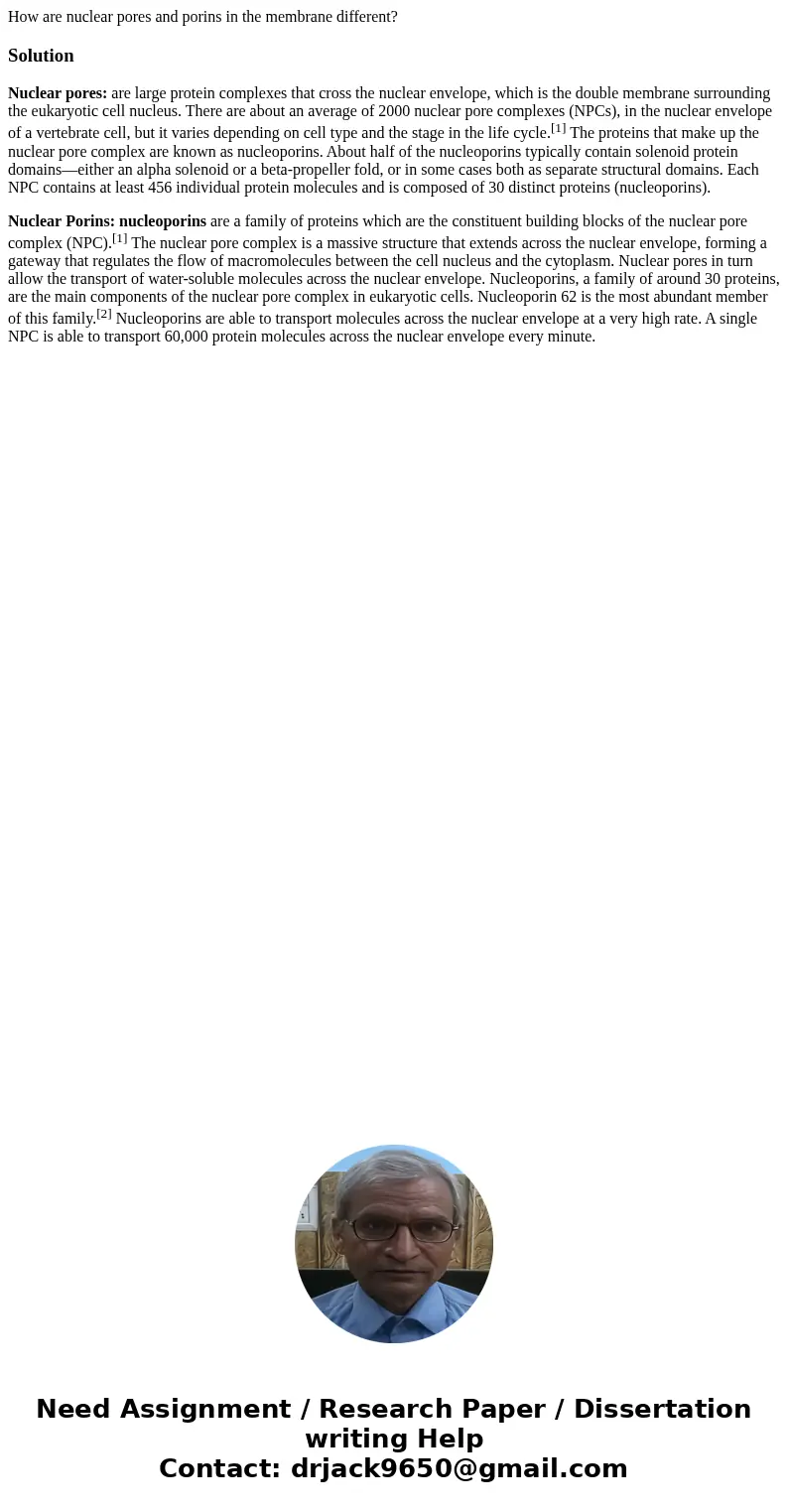How are nuclear pores and porins in the membrane differentSo
How are nuclear pores and porins in the membrane different?
Solution
Nuclear pores: are large protein complexes that cross the nuclear envelope, which is the double membrane surrounding the eukaryotic cell nucleus. There are about an average of 2000 nuclear pore complexes (NPCs), in the nuclear envelope of a vertebrate cell, but it varies depending on cell type and the stage in the life cycle.[1] The proteins that make up the nuclear pore complex are known as nucleoporins. About half of the nucleoporins typically contain solenoid protein domains—either an alpha solenoid or a beta-propeller fold, or in some cases both as separate structural domains. Each NPC contains at least 456 individual protein molecules and is composed of 30 distinct proteins (nucleoporins).
Nuclear Porins: nucleoporins are a family of proteins which are the constituent building blocks of the nuclear pore complex (NPC).[1] The nuclear pore complex is a massive structure that extends across the nuclear envelope, forming a gateway that regulates the flow of macromolecules between the cell nucleus and the cytoplasm. Nuclear pores in turn allow the transport of water-soluble molecules across the nuclear envelope. Nucleoporins, a family of around 30 proteins, are the main components of the nuclear pore complex in eukaryotic cells. Nucleoporin 62 is the most abundant member of this family.[2] Nucleoporins are able to transport molecules across the nuclear envelope at a very high rate. A single NPC is able to transport 60,000 protein molecules across the nuclear envelope every minute.

 Homework Sourse
Homework Sourse